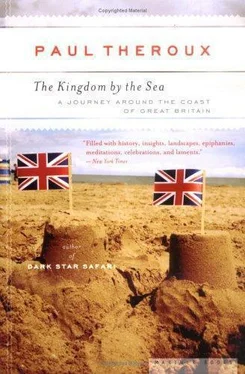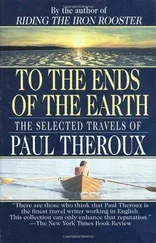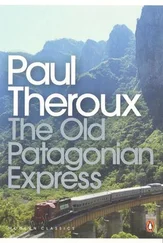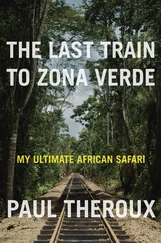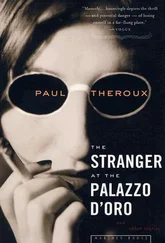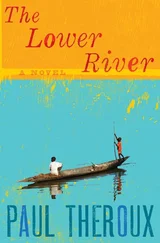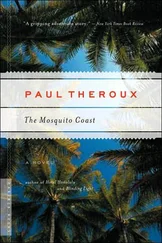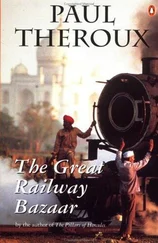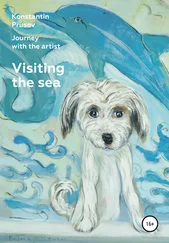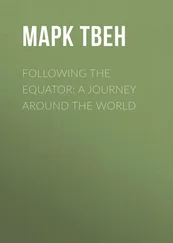None of it was good food, and it was all vastly inferior to the food obtainable locally, which cost less than half as much. But my experience of Aberdeen had shown me that foreigners were treated with suspicion, and it was quite understandable that there was a sense of solidarity to be had from being brand-loyal. Crisco and Skippy were part of being an American — and, in the end, so was Charmin Toilet Paper. I imagined that to an American in Aberdeen imported frozen pizza was more than a cultural necessity — it was also a form of revenge.
"Isn't there anything you like about Aberdeen?" Mr. Muir asked imploringly, as we waited on the platform at Guild Street Station for the train to Dundee. I had spent ten minutes enumerating my objections, and I had finished by saying that I never wanted to see another boom town again. What about the cathedral, the university, the museum — hadn't I thought the world of them?
"No," I said.
He looked appalled.
I said, "But I liked the bakeries. The fresh fish. The cheese."
"The bakeries," Mr. Muir said sadly.
I did not go on. He thought there was something wrong with me. But what I liked in Aberdeen was what I liked generally in Britain: the bread, the fish, the cheese, the flower gardens, the apples, the clouds, the newspapers, the beer, the woolen cloth, the radio programs, the parks, the Indian restaurants and amateur dramatics, the postal service, the fresh vegetables, the trains, and the modesty and truthfulness of people. And I liked the way Aberdeen's streets were frequently full of seagulls.
21. The 9:51 to Leuchars Junction
IT WAS a mild meadowy coast for seventy miles, from the mouth of the Dee to the mouth of the Tay — Aberdeen to Dundee. I had hoped to walk part of it, keeping to the clifftops and avoiding the deep cuts and gullies and the dark promontories. I liked the way the shaggy grass hung into the coves from the cliff edge. Today that grass was streaming and even the sea was flattened by the falling rain. The storm brightened the stone on the snug coastal cottages and gave it the color of snail shells.
Stonehaven was visibly prosperous, which was odd, because most well-off Scottish towns tried to hide their prosperity. We skirted the town's pretty bay, turned inland for perhaps twenty miles, and then returned to the coast at Montrose, which lay on a landspit in front of a large tidal lagoon, Montrose Basin. Slouching cows searched for grass near the apartment houses at Montrose, and farther south at Lunan Bay a hundred hogs in the field were suddenly illuminated by a gleam of sunshine through the draperies of the downpour. The light also reddened a nearby castle ruin and briefly warmed the sands of the bay.
The gale surged again, with mares' tails off Arbroath, and it swept across the Front. But I imagined it to be a joyless place even in full sunshine. The coast had turned duney. In Scotland it was either black cliffs or gray links, and sometimes for miles it was bleak attenuated golf courses, end to end in the sand. Scottish golf courses were never pretty things: they were windy and lacked topsoil; they were oddly lumpy, scattered with rabbit holes and bomb craters; they looked like minefields. Carnoustie was that way — battlescarred — and so was Barry. And then we came to Monifieth, where three tall swans were swimming in the sea.
I chose to stop at Dundee because it had a reputation for dullness ("possesses little of interest for the tourist"). Such places were usually worth seeing. I had found that in Britain less was revealed by the lovely old town than the ugly new one. Old Dundee had been destroyed, and new Dundee was an interesting monstrosity. It was certainly an excellent example of a hard-edged horror — the prison-like city of stony-faced order — that I associated with the future. Just the word futuristic brought to my mind the most depressing images of idle crowds and ugly buildings, unfriendly streets, steel fences, barred windows, and defoliation; and it was bound up with the concept of organized leisure — the intimidating symmetry of group fun. Public swimming pools were futuristic.
There had always seemed to me something uncomfortable and dangerous about public swimming pools. Their tiles had a particularly frightening way of turning a shout into a scream, and this noise and the water and the cold showers and the nakedness could make a swimming pool seem like Auschwitz. Rowdy gangs loved to swim — the atmosphere of a pool brought out a bullying streak in them.
The Dundee Swimming and Leisure Centre had the look of a Russian interrogation headquarters, a vast drab Lubyanka in rain-streaked concrete. Inside were three crowded pools, and one was Olympic-sized. They contained a stew of thousands of screaming kids. The building smelled of human flesh and disinfectant; it steamed like a locker room; it was damp in a sickening way. It had a dark cafeteria and a Therapy Suite containing sunlamps and sauna baths ("OAP's Sauna—80 pence"). There were a number of Ping-Pong tables in one room, but no one was playing. In the lobby there were four electronic games being frantically played — boys feeding money into Space Invaders and Frogger and Moon Landing while the single parents and the pensioners and the unemployed came and went. It was in the metropolitan plan, in a world where there was no work and no money but plenty of time; it was part of the process of life in the years to come.
***
Leuchars Junction was no longer a junction, though the name had stuck. It lay across the Firth of Tay, in Fife. It was as near as I could get by rail to St. Andrews ("perhaps the most fashionable watering place in the country"), and I began walking as soon as I arrived at the station.
After a mile or so I came to Guardbridge. Some men were standing in front of the paper mill there. They said they were waiting for a funeral to go past — a man who had worked his whole life at the paper mill was being buried today. The hearse was overdue.
"And I'll tell you something," one of the men said. His name was Gordon Hastie and he was fairly agitated, twisting his cloth cap in his hands as he peered up the St. Andrews Road. "Do you see those flags?"
There were three on the flagpoles in front of the factory — a Union Jack, the Scottish national flag, and what I took to be the paper mill's own flag — all flying at half-mast.
"What a morning it's been," Mr. Hastie said. "A couple of hours ago we had to raise those flags for Queenie. Then after she went by we had to lower them again for Donald."
Donald was the dead man, obviously, but who was Queenie?
"The Queen herself," Mr. Hastie said. "Aye."
"You mean the Queen's here?"
"In St. Andrews," Mr. Hastie said. "Hurry up, you might see her."
Just as I started to run, Donald's hearse went by. I froze. The paper mill men doffed their caps. And then the funeral cars continued down the wet road, and the men went back to work.
It was four miles more to St. Andrews. I walked fast and after a few miles I cut across a field, continuing along the estuary of the River Eden, ending up in the middle of a golf course. There were four golf courses here, but the one I found myself in belonged to the Royal and Ancient Golf Club of St. Andrews, the capital of the golfing world. The course was just as rough and desolate as every other one I had seen in Scotland. Perhaps that was the point of golf?
But there was not a town its size in Britain to compare with St. Andrews, and it was one of the most beautiful towns on the coast, the white stone ruins and the brown stone buildings perched on the rocky cliffs of a wide bay. The golf courses ran into the seafront, and the seafront was part of the playing fields of the university, which was a third of the town; but it was impossible to tell where one ended and the other began. The whole effect was somewhat ecclesiastical, but with fresh air, like a lively cloister with the roof off.
Читать дальше
